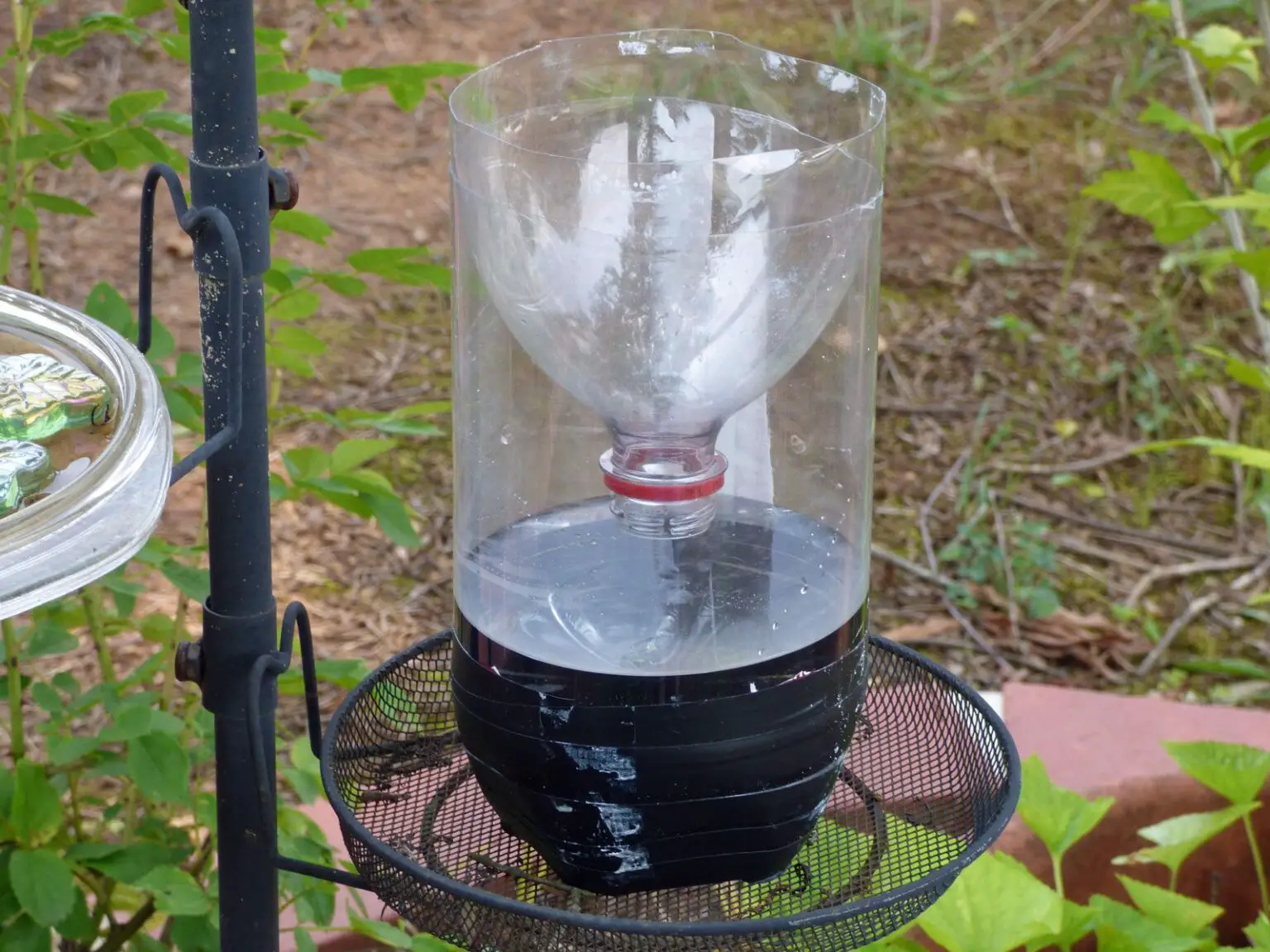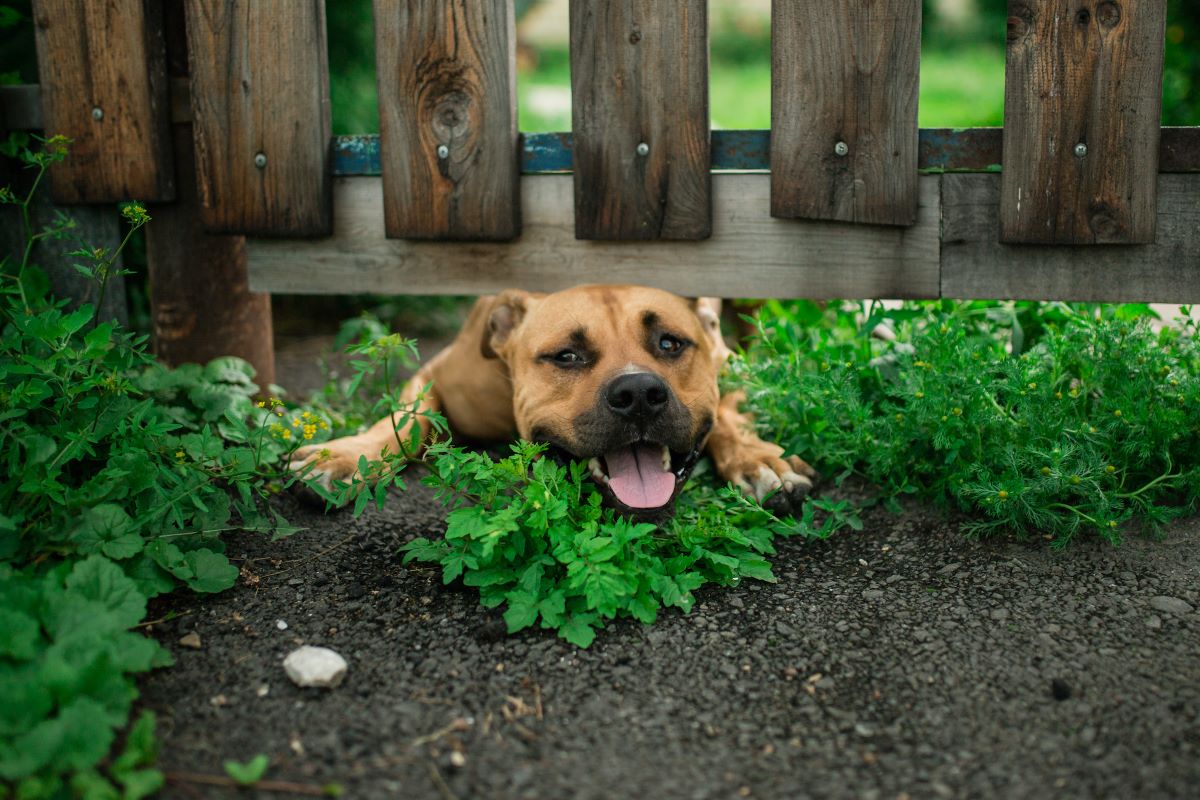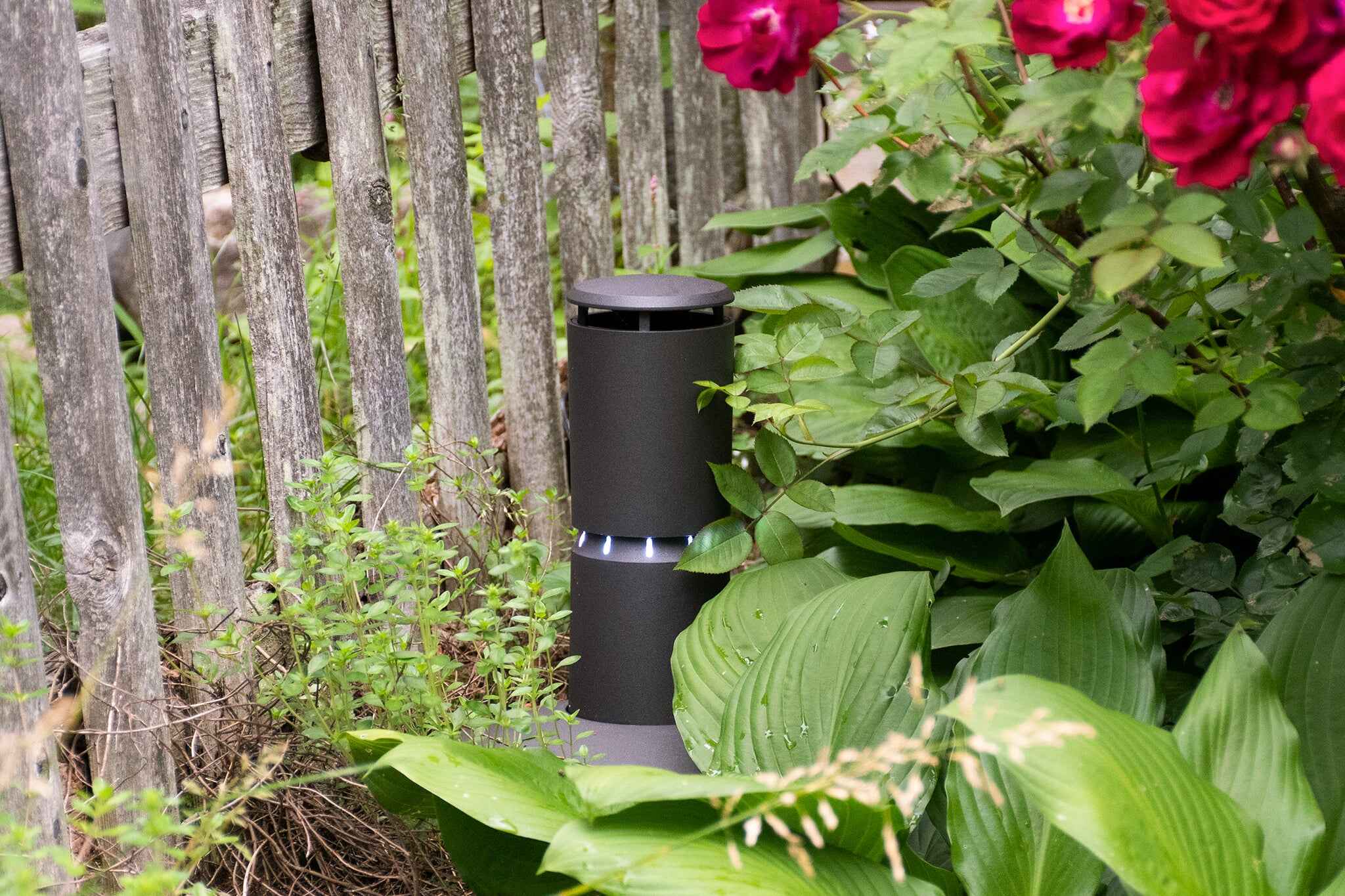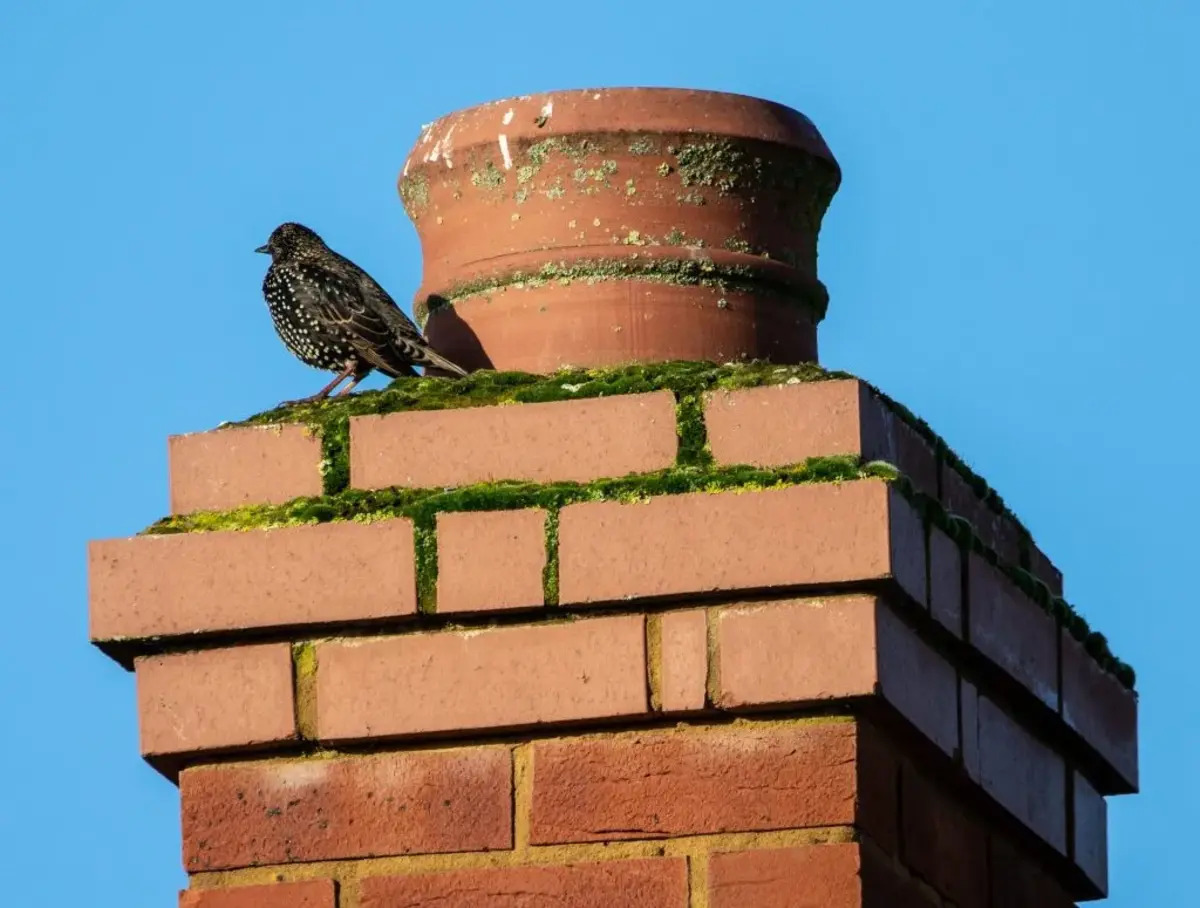Home>Garden Essentials>How To Keep Grass Seed From Washing Away


Garden Essentials
How To Keep Grass Seed From Washing Away
Modified: March 16, 2024
Keep your garden looking lush with our expert tips on how to prevent grass seed from being washed away by rainwater.
(Many of the links in this article redirect to a specific reviewed product. Your purchase of these products through affiliate links helps to generate commission for Storables.com, at no extra cost. Learn more)
Introduction
When it comes to creating or rejuvenating a lush, green lawn, one of the most crucial steps is sowing grass seed. However, nature often has its own plans, and even the best-seeded areas can be prone to erosion and seed displacement. The last thing any gardener wants is to see their hard work go to waste as the seeds wash away with the rain or get carried away by water runoff.
But fear not! There are plenty of strategies you can employ to prevent grass seed from washing away and ensure successful germination. By understanding the mechanisms behind erosion and seed displacement, choosing the right grass seed, preparing the soil properly, employing proper seeding techniques, and taking steps to protect the seeds from rain and water runoff, you can give your grass seeds the best possible chance to take root and flourish.
In this article, we will delve into the various methods to keep grass seed from washing away, providing you with valuable tips and insights to help you achieve a lush and thriving lawn.
Key Takeaways:
- Choose the right grass seed varieties like perennial ryegrass and Kentucky bluegrass to resist erosion and ensure successful germination in your lawn.
- Protect your grass seeds from washout by using mulch, erosion control blankets, and strategic watering to create an optimal environment for healthy seedling development.
Read more: How To Keep Insects Away From The Patio
Understanding Erosion and Seed Displacement
To effectively prevent grass seed from washing away, it is essential to understand the two primary mechanisms behind erosion and seed displacement: water runoff and wind.
Water runoff occurs when rainwater flows over the surface of the soil, carrying away loose particles, including grass seed. This can be particularly problematic on sloped areas, where the force of the water is intensified, making it easier for seeds to be washed away. Wind, on the other hand, can blow away light and unanchored seeds, causing them to be dispersed far from their intended planting area.
Both water runoff and wind can be exacerbated by factors such as compacted soil, inadequate soil cover, heavy rainfall, and improper grading of the land. Understanding these factors will help you implement strategies to minimize erosion and prevent seed displacement.
One crucial step in combating these forces is choosing the right grass seed variety. Certain grass species and cultivars have better resistance to erosion than others, making them more suitable for areas prone to seed washout. Additionally, mixing grass seed with erosion control or stabilizing additives can further improve seed adhesion to the soil and prevent displacement.
By understanding the mechanisms of erosion and seed displacement and taking proactive measures to address them, you can significantly increase the chances of successful grass seed germination and establishment.
Choosing the Right Grass Seed
When it comes to preventing seed washout and promoting a healthy, resilient lawn, selecting the right grass seed is of utmost importance. Not all grass species and cultivars possess the same characteristics when it comes to erosion resistance and adaptability to different soil types and weather conditions.
Before purchasing grass seed, consider factors such as the climate in your region, soil type, amount of sunlight, and the level of foot traffic your lawn will endure. These factors will help you determine the most suitable grass species for your needs.
If erosion is a primary concern, opt for grass varieties known for their ability to bind the soil and resist displacement. Perennial ryegrass, tall fescue, and Kentucky bluegrass are excellent choices, as they offer strong root systems and dense vegetation that helps stabilize the soil. These grass types are known for their adaptability and can thrive in various climates.
Another key consideration when selecting grass seed is its tolerance to shade. If your lawn has areas with limited sunlight, choose shade-tolerant grass species like fine fescue or creeping red fescue. These varieties are well-suited for areas with partial shade and provide excellent erosion control.
It’s also essential to check the seed label for any additional coatings or additives that aid in erosion control and seed establishment. Some grass seed packages may include mulch, fertilizer, or other stabilizing agents that improve seed-to-soil contact and increase the chances of successful germination.
When in doubt, consult with local experts or your nearby garden center for guidance on selecting the best grass seed for your specific conditions. With the right seed choice, you’ll have a solid foundation for preventing seed washout and establishing a beautiful, resilient lawn.
Preparing the Soil
Proper soil preparation is crucial for successful grass seed establishment and preventing seed washout. Before sowing your grass seed, take the time to prepare the soil to create an ideal environment for seed germination and root development.
Here are some essential steps to prepare your soil:
- Remove debris: Start by clearing the area of any weeds, rocks, or other debris that may hinder seed-to-soil contact.
- Test the soil: Conduct a soil test to assess its pH levels and nutrient content. This will help you determine if any amendments, such as lime or fertilizer, are needed to optimize the soil’s fertility.
- Loosen the soil: Use a garden rake, hoe, or tiller to loosen the top layer of soil. This will improve the seed’s ability to penetrate and anchor itself to the soil.
- Level the surface: Smooth out any uneven areas to promote even water distribution and prevent water pooling, which can lead to seed washout.
- Add organic matter: Incorporate organic matter, such as compost or peat moss, into the soil to improve its structure and drainage. This will also enhance the soil’s ability to retain moisture, reducing the risk of seeds being washed away during heavy rainfall.
By taking the time to properly prepare your soil, you create an optimal environment for grass seed establishment. The improved soil structure, fertility, and drainage will not only help prevent seed washout but also promote healthy root development and long-term lawn vitality.
Seeding Techniques
When it comes to sowing grass seed, employing the right seeding techniques can make a significant difference in preventing seed washout and maximizing germination rates. Here are some key techniques to keep in mind:
- Even distribution: To ensure uniform coverage, divide the total amount of grass seed you plan to sow into two equal portions. Scatter the first portion evenly over the designated area, moving in one direction. Repeat the process with the second portion, moving in a perpendicular direction. This cross-hatching method helps achieve a more even distribution of seeds.
- Proper seed depth: The depth at which you sow the grass seed is crucial. As a general rule, the ideal seeding depth is about 1/4 to 1/2 inch. Use a rake or lawn roller to lightly press the seeds into the soil after broadcasting to ensure good seed-to-soil contact.
- Overseeding: If you’re trying to fill in bare spots or thicken an existing lawn, overseeding can be beneficial. Use a lawn aerator to create small holes in the soil before overseeding, as it enhances seed-to-soil contact and improves germination rates. Following the same even distribution technique mentioned above, spread grass seed evenly over the aerated areas.
- Topdressing: Topdressing involves covering the freshly seeded area with a thin layer of soil, compost, or topsoil. This layer provides additional protection to the seeds, reduces evaporation, and helps prevent seed washout.
- Hydroseeding: Hydroseeding is an effective technique for large areas or areas with challenging access. It involves using a mixture of grass seed, mulch, water, and a bonding agent, which is sprayed onto the soil surface. Hydroseeding helps improve seed-to-soil contact, reduces erosion risks, and enhances germination rates.
By utilizing these seeding techniques, you greatly increase the chances of successful grass seed germination and minimize the risk of seed washout. Remember to follow the instructions provided by the grass seed manufacturer for best results.
After spreading grass seed, lightly cover it with a thin layer of straw or mulch to help prevent it from washing away during heavy rain or watering.
Protecting Grass Seed from Rain and Water Runoff
One of the main challenges in preventing seed washout is protecting the grass seed from heavy rain and water runoff. Luckily, there are several strategies you can employ to safeguard your seeds and increase their chances of successful germination.
Straw mulch: Applying a layer of straw mulch over freshly seeded areas is an effective way to prevent seed washout. The straw acts as a natural barrier, reducing the impact of raindrops and water runoff. It also helps retain moisture, enhances seed-to-soil contact, and provides insulation for the seeds during colder weather.
Erosion control blankets: Erosion control blankets or mats are another valuable tool in preventing seed washout. These biodegradable blankets are made from natural fibers and help stabilize the soil and hold the grass seeds in place. They provide protection from rain, control erosion, and create an optimal microclimate for seed germination and establishment.
Silt fences: Silt fences are often used on construction sites to control soil erosion and sediment runoff. They can also be employed in home gardening to create a barrier that slows down water runoff and reduces the chances of seed washout. Install the silt fence at the bottom of sloping areas to intercept and filter the water before it carries away the seeds.
Strategic seeding timing: Timing your seeding efforts is crucial for minimizing the exposure of grass seeds to heavy rain and runoff. Aim for a period when the weather is relatively stable, with minimal rainfall and less chance of heavy storms. This will give the seeds ample time to germinate and establish before being subjected to extreme weather conditions.
Hydroseeding additives: When using the hydroseeding technique, consider adding specialized additives to the mixture that enhance seed adhesion and provide extra protection against water runoff. These additives improve the bonding between the seed and soil, minimizing the risk of seed displacement during heavy rains.
By implementing these protective measures, you can significantly reduce the risk of grass seed washout and ensure the successful establishment of your lawn.
Using Mulch and Erosion Control Blankets
Mulch and erosion control blankets are effective tools for preventing seed washout and protecting newly seeded areas. They serve as protective layers that help retain moisture, reduce erosion, and create a favorable environment for seed germination and establishment.
Mulch: Applying mulch over freshly sown grass seed provides numerous benefits. Mulch acts as a protective barrier, shielding the seeds from the impact of heavy raindrops and water runoff. It also helps retain moisture in the soil, preventing it from drying out too quickly, which is especially important during the early stages of seed germination. Additionally, mulch protects the seed from extreme temperature fluctuations and provides a natural weed barrier.
There are various types of mulch to choose from, including straw, hay, or wood chips. Straw mulch is a popular option due to its affordability and ability to break down naturally over time, providing organic matter back to the soil. Spread a thin layer of mulch evenly over the seeded area, ensuring it does not smother the grass seedlings as they emerge.
Erosion Control Blankets: Erosion control blankets, also known as erosion control mats or netting, are specially designed to stabilize soil and prevent seed washout. These biodegradable mats are made from natural fibers and are usually placed on sloped areas or where there is a risk of heavy runoff.
The erosion control blankets are typically laid on the soil surface before seeding. They work by slowing down water runoff and allowing it to percolate through the mat, reducing erosion and keeping the seeds in place. The blankets also create a microclimate that enhances seed germination and protects the developing grass seedlings.
When using erosion control blankets, be sure to follow the manufacturer’s instructions for installation. Secure the edges of the blankets with stakes or staples to prevent them from shifting or being swept away by strong winds or heavy rainfall.
Both mulch and erosion control blankets play a vital role in protecting grass seed from washout and increasing the chances of successful germination. When used in combination with other seed protection methods, such as proper seeding techniques and timing, they create an ideal environment for your grass to thrive.
Watering and Irrigation Methods
Watering and irrigation are crucial factors in preventing seed washout and promoting healthy grass seed germination. Proper moisture levels are essential for seed hydration and root development. Implementing appropriate watering and irrigation methods can help ensure the success of your lawn by optimizing the water supply to the seeds.
Watering frequency: During the germination phase, it’s important to keep the soil consistently moist but not waterlogged. Water lightly and frequently to prevent the seeds from being dislodged or washed away. Aim for shallow, frequent watering sessions that provide enough moisture to encourage seed germination without causing runoff.
Timing of watering: Watering your grass seeds early in the morning is ideal. This allows the water to penetrate the soil and reach the seeds before the heat of the day evaporates it. Avoid watering in the late afternoon or evening, as extended periods of moisture on the lawn overnight can lead to fungal diseases.
Sprinklers vs. soaker hoses: Sprinklers provide broad coverage and are suitable for larger areas, but they can be less precise and may lead to seed washout if the water pressure is too high. Soaker hoses, on the other hand, deliver water directly to the soil, minimizing the risk of seed displacement. They provide more targeted and controlled irrigation, allowing the water to penetrate the ground gradually.
Drip irrigation: Drip irrigation systems are another effective method to water newly seeded areas. They ensure a slow, steady flow of water directly to the roots, reducing evaporation and minimizing the risk of seed washout. Drip irrigation systems are particularly useful in areas with high water evaporation rates or where water conservation is a concern.
Moisture monitoring: Regularly monitor the moisture levels in the soil to prevent under or over-watering. Use a soil moisture meter or simply observe the soil’s appearance and feel. The top inch of soil should be kept moist, but not saturated. Adjust your watering schedule accordingly based on the moisture levels and weather conditions.
Proper watering and irrigation techniques are essential for preventing seed washout and promoting successful grass seed germination. By implementing these methods and maintaining consistent moisture levels, you’ll provide the optimal conditions for your grass seeds to take root and grow into a vibrant, healthy lawn.
Additional Tips for Preventing Seed Washout
While implementing the strategies mentioned earlier can greatly minimize the risk of seed washout, here are a few additional tips to consider:
- Grass seed starter fertilizer: Applying a grass seed starter fertilizer can promote healthy seed germination and establishment. These fertilizers provide essential nutrients that aid in root development and overall seedling vigor. Look for a fertilizer specifically formulated for use with grass seeds and follow the manufacturer’s instructions for application rates.
- Adjusting slope grading: If you notice that water runoff is a recurring issue in your seeded area, consider regrading the slope to change the direction of water flow. This can be done by adding soil or reshaping the terrain to redirect water away from the seeded area.
- Contouring the land: Contouring involves shaping the land in a way that slows down water flow and prevents concentrated runoff. By creating subtle ridges or swales, you can help distribute water evenly across the seeded area, reducing the chances of seed washout.
- Managing soil compaction: Compacted soil can impede water infiltration and increase the risk of runoff. Prior to seeding, address any areas with compacted soil by aerating or loosening the soil to improve its structure and water absorption capacity.
- Monitoring and adjusting watering: Keep a close eye on weather conditions, especially during periods of heavy rainfall. Adjust your watering schedule accordingly to avoid over-saturating the soil and causing seed washout.
- Implementing a sediment retention basin: For larger areas or areas prone to significant water runoff, consider constructing a sediment retention basin. This basin collects sediment and slows down water flow, protecting the seeded area and reducing the risk of seed washout.
- Regular maintenance: Once your grass seeds have successfully germinated, it is important to maintain proper lawn care practices. Regularly mow the lawn at the recommended height for your grass species, as taller grass can help prevent soil erosion and provide further protection to the seeds.
By following these additional tips and incorporating them into your seeding and maintenance routine, you can significantly reduce the chances of seed washout and create the optimal conditions for your grass seeds to thrive and establish a beautiful, healthy lawn.
Read more: How To Keep A Patio Rug From Blowing Away
Conclusion
Preventing seed washout and ensuring the successful establishment of grass seeds requires careful planning, proper techniques, and proactive measures. By understanding the mechanisms of erosion and seed displacement, selecting the right grass seed, preparing the soil, and implementing the appropriate seeding techniques, you can set the stage for a thriving lawn. Protecting the grass seed from rain and water runoff through the use of mulch, erosion control blankets, and other strategies further increases the chances of successful germination. Proper watering and irrigation techniques, along with additional tips like adjusting slope grading and monitoring soil compaction, play a crucial role in preventing seed washout and maintaining healthy seedling development.
Remember, the key is to strike a balance between providing the seeds with the right conditions for growth while minimizing their exposure to heavy rain and water runoff. With consistent care, maintenance, and attention to detail, you can create a beautiful, resilient lawn that withstands the tests of nature and time.
So, take the necessary steps to protect your grass seeds, implement the strategies outlined in this article, and enjoy the satisfaction of seeing your lawn flourish with vibrant, healthy grass.
Frequently Asked Questions about How To Keep Grass Seed From Washing Away
Was this page helpful?
At Storables.com, we guarantee accurate and reliable information. Our content, validated by Expert Board Contributors, is crafted following stringent Editorial Policies. We're committed to providing you with well-researched, expert-backed insights for all your informational needs.














0 thoughts on “How To Keep Grass Seed From Washing Away”